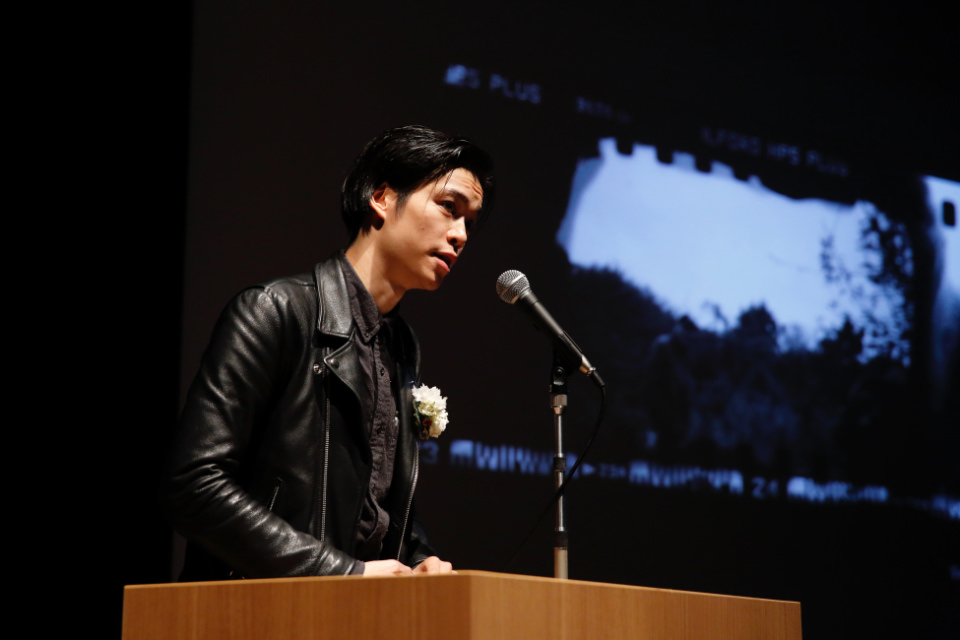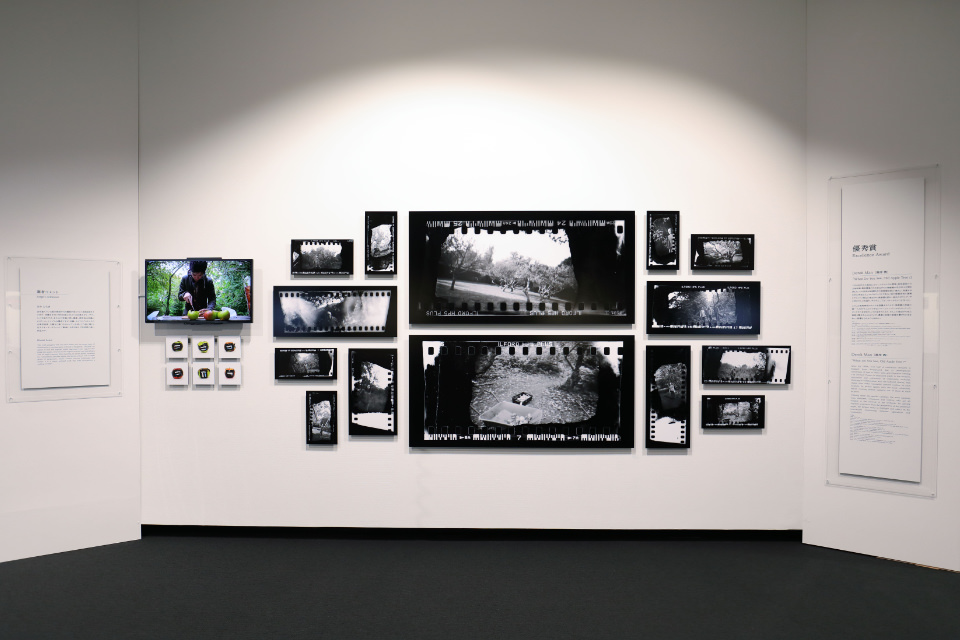PRESENTATION
I have created work on themes of identity, a sense of belonging, and local communities. I lived in Hong Kong until I was 17 and then moved to the UK 13 years ago. Now the UK feels like my homeland. This work is about apples. Why apples? Because it is the most English fruit there is. Moreover, I wanted to understand the essence of England as my homeland.
I took photos of orchards like these in London and the people supporting the orchards. I wanted to show my respect for the people supporting the orchards.
The number of orchards is declining every year; orchards in London have decreased by 98 percent in the last 100 years. Today, only 31 percent of apples eaten in the UK are grown in the UK. This is a sign that we have distanced ourselves from nature, as we have sought economic growth and development. People born and raised in cities can experience nature only in places like these orchards.
For this work, I made cameras from apples to see from the eye of the apple. In this way, the apples are not just objects or subjects; they are at the core of the work. The title derives from the title of an old song that everyone would dance to around the tallest tree in the orchard. The song was sung to cast off evil spirits and to pray for an abundant harvest.
All the cameras I made were site specific. I went to a number of orchards in London and picked apples there, hollowed them out, and turned them into cameras. Consequently, every photo has a direct connection to the camera that took it. This relationship is like a circle. Without the people, there would be no apple trees, and without the apple trees, there would be no apples, and without the apples, there would be no cameras and, thus, no photos.
Even in the same orchard, there would be many varieties of apples, and each camera I made is completely different. So each time I made a new camera, I had to understand the camera and learn to take photos with the camera.
Also, I didn't want the apples I used to end up in the rubbish, so I made it a rule to bring the apples home and eat them in an apple pie or fruit salad.
What I quickly realized as soon as I started shooting is that occasionally I got completely unexpected results because I would not be taking high-resolution images in this project. For example, volunteers are in the center of the picture but on the right side is a black portion. That is not part of the photo but likely a reaction between the negative and the apple's juices. All these photos used apples and were not created in any sort of controlled environment. The frame outlines too are included in the overall photo forming a layer.
The photos were taken by peeling off a bit of tape from the apple and replacing it about two seconds later. This is the same concept as a pin-hole camera, but of course, it's a little moister. I could only take two to six frames each time. And making one apple-camera took 20 minutes. Unlike conventional cameras, while going back to the roots of apples, I was also going back to the roots of photography.
Through this project, I thought about the relationship between food and community and about nature and cities. Apples are important characters in the story, so I gave them names as I took photos with each one. That made it feel more like a collaboration with each apple. And that concludes my project presentation.


Judges’s Comment
Hiraki Sawa (selector)
I really enjoyed looking at this work. While looking at thousands of beautiful visuals, your images were challenging, in that they were out of focus and lacking anything we would conventionally call beauty. The concept is interesting and the work has several layers of perspective and social engagement.
When you submitted your exhibit plan, I thought that the description video might be unnecessary, but your work would have been more difficult to understand without the video. To what extent does your work have to be explained to people? Was it essential that the photos and the video be placed together?
(Derek Man)
It's important for me that viewers understand the process. This work is not just art but also a communication tool. To get as many people as possible to understand the issues, it was important for them to see the video.
(Sawa)
The video was easy to follow and I found it romantic in a way to think of the apples being picked by those people. I felt like I was being presented with reality right beside people enjoying themselves picking apples. How did you arrive at the size and order of photos for your exhibit to produce this effect?
(Derek Man)
I wanted to focus on people rather than the scenery, and I wanted to place the people who maintain the orchards in the center. I wanted to express nuance with the sizes, so I worked out how large could I go with the photos starting from the very smallest one.